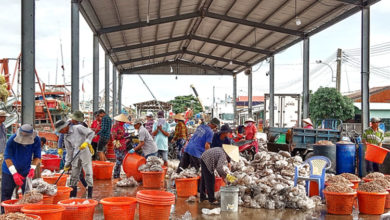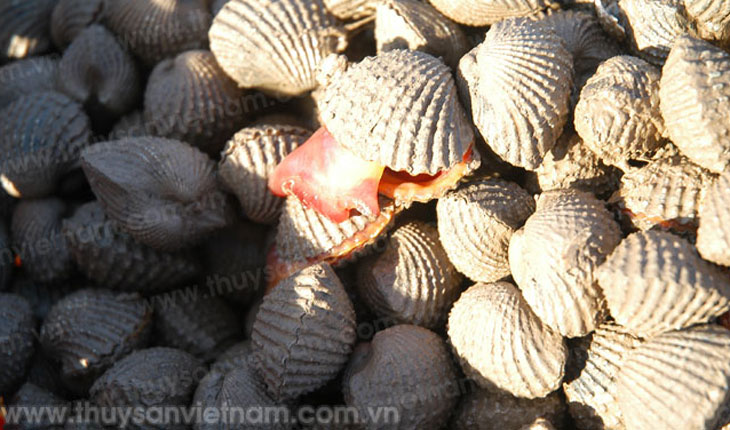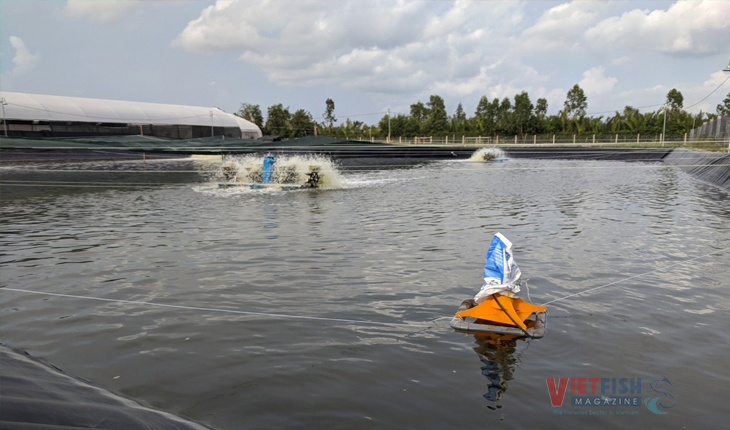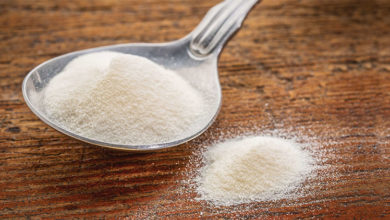Rice-shrimp culture in the Mekong Delta
Rice-shrimp farming systems was created by the farmers in the Delta’s coastal areas, which producing clean shrimp and rice. During the process of roating rice and shrimp farming on the same fields, the farmers have continously intercropped several aquatics species such as crabs, mullets; giant tiger shrimp, white-legged shrimp, earning a high profit of about VND 200 million per ha for one crop.
Rice-shrimp farm expansion
In U Minh Thuong, which is the largest shrimp-rice production zone of Kien Giang province, the quality of farmers ‘lives improved due to better productivity.
Vo Van Quy, farmer in Minh Hoa, Dong Hoa town, An Minh said: On 1.5 ha of paddy field, we grow one rice cop with two shrimp crop a year. Tiger shrimp is cultivated in areas where saline water intrusion occurs in the dry season. And in the rainy season, we grow rice and giant tiger shrimp. The model has a yield of 300kg of giant tiger shrimp and 6 tones of paddy per hectare each year, providing profits of VND 30-40 millions per ha (US$1.500-2.000) a year.
Vice Chairman of the provincial People’s Committee Mai Anh Nhin pointed out, the total shrimp aquaculture area is 90,000 ha, of which rice-shrimp farming area reached 80,000 ha. Previous farming model just had a yield of 2-3 tones of paddy per hectare each year, thus farmers still lived in poverty. Over 15 years of fishery transitions, shrimp- rice rotation have produced 280 kg and 4-5 tones per hectare each year respectively. Besides, the farmers intercropped other aquatics species like tiger shrimp, crab, giant tiger shrimp…on a paddy field, earning more than VND 150 millions per hectare, much higher profit than only rice cultivation.
According to Mai Van Nhin, Kien Giang proposed the Ministry of Agriculture and Rural Development to transit 20.000 ha of rice monoculture in Hon Dat to rice-shrimp farming model, target to improve farmers’ lives in the difficult case of rice output.
According to the Directorate of Fisheries, the adoption of rice-shrimp system in the Mekong Delta has increased steadily. The model has a total area of 160,000 ha, a yield of 300-500 kg shrimp per hectare and productivity of 600,000 tones per year. The coastal provinces of Kien Giang, Ca Mau, Bac Lieu, Tien Giang, Soc Trang, Ben Tre…have the largest sustainable areas of rice-shrimp farming in the Delta.
Billion USD target
Pham Van Du, Deputy chief of the Department of Crop Production, under the Ministry of Agriculture and Development said that dual rice-shrimp cultivation has proven so economically effective and environmentally friendly which can adapt to climate change caused by sea level rise. Instead of preventing salt water intrusion, farmers allow saline water to enter fields to farm shrimp effectively, contributing to agriculture structure process. The rice-shrimp production scale in the Mekong Delta could reach 200,000 ha, contributing about 800,000 tones of clean rice a year. Many countries in the world order this clean rice at 800 – 900 USD per ton but demand surpasses supply.
Pham Khanh Ly, Vice head of the Department of Aquaculture of the Ministry of Agriculture and Rural Development said, shrimp-rice farming model will be practiced as a key and foremost component in respond to climate change, sea live rise and salt water intrusion. This model has proven more effective and sustainable than other aquatic production model.
At a workshop in Kien Giang province in 2015 on “solution of improving the productivity and strengthening shrimp-rice production model in the Mekong Delta”, Deputy Minister of MAR, Vu Van Tam said that, shrimp-rice farming area in the Delta was expected to increase to 200,000-250,000 ha by 2020, in which commercial shrimp production reached 100,000-150,000 tones per year, farmers would earn over VND 20,000 billions ( US$ 1 billion). This target would be reached if the government invest comprehensively; and coastal provinces in the Delta seize the potential opportunities.
>>Shrimp-rice farming area in the Mekong Delta was expected to increase to 250,000 ha by 2030, yielded of 125,000-150,000 tones of commercial shrimp.
Ngoc Trinh – Minh Khanh







I’m an environmental researcher. Very interested in the field of fisheries and environmental impact to fisheries in general. Hope can cooperate.
I had no idea how to approach this beofoe-nrw I’m locked and loaded.
I am really impressed with your writing skills and also with the layout on your
weblog. Is this a paid theme or did you customize it yourself?
Anyway keep up the nice quality writing, it’s rare to see a great blog like this
one today.
I suppsoe that sounds and smells just about right.
This is way more helpful than anihytng else I’ve looked at.